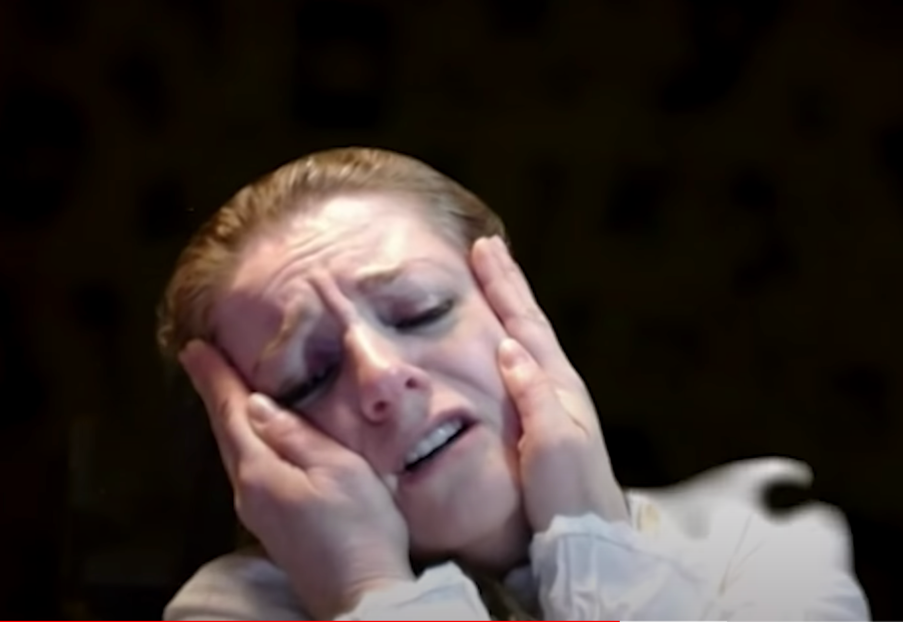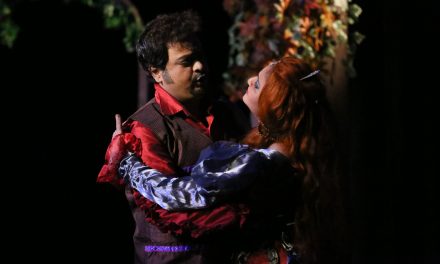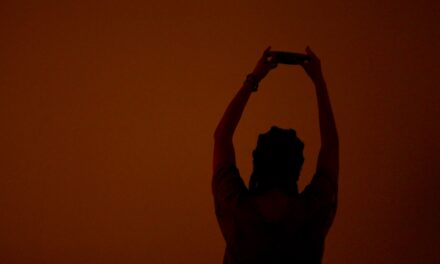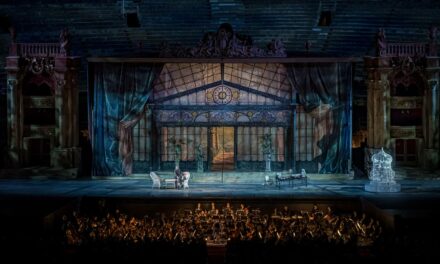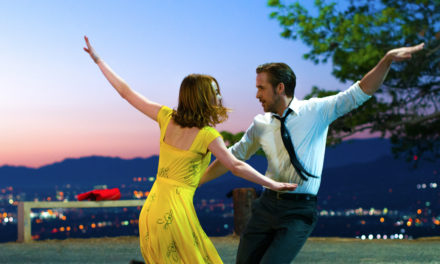December 9, 2020, marked an important anniversary in Jewish theater history: a centennial of the world premiere of The Dybbuk, Or Between Two Worlds, the most often staged Russian/Yiddish/Hebrew drama penned by S. An-sky (pseudonym of Shloyme Zanvl Rapoport, 1863-1920) in 1914. The global celebration of the play’s centenary included scholarly and artistic panels, online exhibits, and new theater productions in Poland, the United States, and beyond.
Even though An-sky originally intended the play for the Moscow Art Theater – the long story short, Stanislavsky accepted it for the First Studio but then passed it on to the Habimah Studio, which produced it in Hebrew in 1922 under the spectacular direction of Eugene Vakhtangov – the play eventually premiered in Warsaw, Poland, thirty days after An-sky’s death, on December 9, 1920, staged in Yiddish by the Vilna Troupe. The Dybbuk, often labeled as the Jewish Romeo and Juliet meets The Exorcist, became a global sensation almost instantaneously. In the course of a century that followed, it has inspired about 120 adaptations and original productions in a variety of genres – from film and theater through literature, to music and dance.
The plot? A poor boy, Khonen, falls in love with a rich girl, Leah, whose father is about to marry her off to a wealthy boy. Khonen dabbles in the forbidden Kabbalah to enrich himself quickly and satisfy the demands of Leah’s greedy father but drops dead in the process. On Leah’s wedding day, Khonen returns to possess his bashert, a predestined soulmate, as a dybbuk, i.e. a soul of the dead that enters a living body. And then hell breaks loose, kind of.
The Dybbuk premiered as Europe was slowly emerging from the traumatic devastation of the Great War. What is more, theater scholar Debra Caplan recently pointed out, it opened less than a year after the last wave of the Spanish Flu. In an ironic and bizarre twist of history, the 100th anniversary Yiddish-language production of The Dybbuk, Or Between Two Worlds (Der Dibek, Oder Tsvishn Tsvey Veltn) is a “pandemic” version. Produced by Shane Baker (starring in the play as Rabbi Shimshon) of the Congress for Jewish Culture, the play opened on YouTube on December 14, 2020, the Hebrew calendar centenary of The Dybbuk’s premiere.
Anyone who at the thought of another Zoom venture makes an eye-roll and a deep sigh will be surprised. Although, as Rhiannon Ling observes in a recent review, “theatrical performance is not built for digital platforms, [and] digitization is not designed for dramatics,” this production proves otherwise, at least to some extent. The leading actors Yelena Shmulenson (Leah), Daniel Kahn (Khonen), and Mendy Cahan (Rabbi Azriel, the Exorcist) under the brilliant direction of Allen Lewis Rickman transform the performance into a transfixing spectacle.
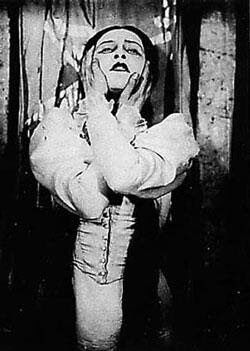
Hannah Rovina as Leah in the iconic 1922 production. (© Public domain)
Yelena Shmulenson, known to broader audiences from the Yiddish-speaking opening of the Coen Brothers’ A Serious Man (2009), transforms her dybbuk possession into a petrifying performance that sends chills down your spine. Leah’s heartrending monologue (featured in the original play) about us “being surrounded by the souls of people who died before their time” acquires another layer of meaning for Covid-era audiences. The poignant moment when Shmulenson/Leah’s hands embrace her face as a sign of Khonen’s soul inhabiting her body alludes to the iconic gesture first performed by Hannah Rovina, the Grand Dame of the Habimah Theater who played Leah for most of her theatrical career. In short, Shmulenson’s mesmerizing rendition of Leah inscribes her in the lineage of legendary performers of this most desired role on the Yiddish stage.
Daniel Kahn, whom some may remember from the stirring Yiddish version of Death of a Salesman (2015) and pre-Broadway run of the Yiddish Fiddler on the Roof (2019), delivers an outstanding performance of Khonen’s Hamletesque monologue about the meaning of love, God, and evil, which makes you glued to the screen. Mendy Cahan, an Israeli Yiddish actor and activist, most recently seen in Son of Saul (2015), poignantly delivers Rabbi Azriel’s famed crisis of faith monologue, while his unnerving exorcism stops you in your tracks. The international cast from the United States, Germany, Israel, Argentina, and Canada — who would be near to impossible to get in one room under non-pandemic circumstances due to financial hardships that regularly plague the Yiddish theater –– make this production one of the kind. Though it may make no difference to an untrained ear, the fact that the entire cast are actual Yiddish speakers allows them to perform the text on a much more profound level. A true delight for Yiddish connoisseurs.
A masterful adaptation by Allen Lewis Rickman (starring alongside Shmulenson in A Serious Man’s opening Yiddish fable) who directed and designed the play, reveals Rickman’s great sense of theatricality and digital limitations. Beautiful woodcuts by Sh. Yudovin, in lieu of set design, alongside the Hebrew letters designed by Kenny Funk and artfully merged in the background as an otherworldly backdrop, remind us that while we are looking at our laptop screens, we are in fact submerged in the world of a nineteenth-century Eastern European shtetl (small town), where the play is set. As does the soul-stirring music performed by klezmer star Michael Winograd. Uri Schreter’s imaginative digital design featuring skillful arrangements of characters on the screen transforms what could have been another tedious Zoom scenario into a truly captivating production. Truth be told, the performance absorbs you so much that at times you catch yourself wishing that some of the actors were not visibly reading their lines, but then you recall that it was, after all, originally billed as a staged reading.
All in all, while it obviously doesn’t come close to the experience of being in the dark auditorium immersed in the magic of the Theater, this production delivers a powerful dramatic experience that possesses you like a dybbuk, long after you closed the screen. As much as it may seem blasphemous to find upsides in the current pandemic nightmare, it is quite remarkable that a play in Yiddish (with English subtitles) has been watched by over 6,000 people in the first few weeks since its premiere, while pre-pandemic Yiddish-language productions often struggle to fill small theaters. It also gives me an unexpected thrill to say there is no end date to this performance: it is available infinitely on Youtube for your viewing pleasure. (Donations for the Congress for Jewish Culture in lieu of tickets highly appreciated).
This post was written by the author in their personal capacity.The opinions expressed in this article are the author’s own and do not reflect the view of The Theatre Times, their staff or collaborators.
This post was written by Agnieszka Legutko.
The views expressed here belong to the author and do not necessarily reflect our views and opinions.

